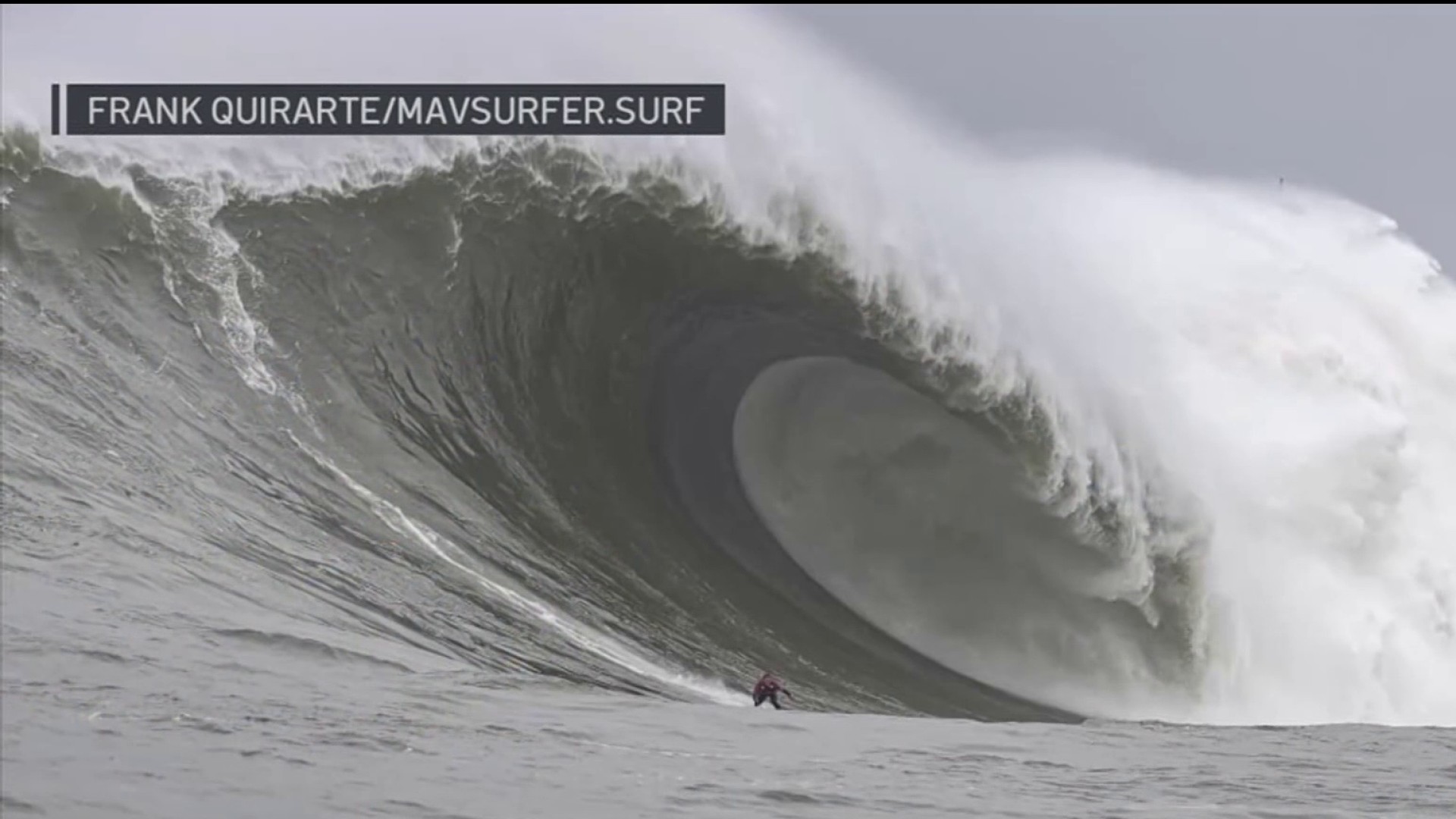Researchers alarmed by the proliferation of purple urchin that have decimated kelp forests along the north coast are experimenting with a somewhat more brute force tactic for getting rid of them - they're allowing divers to simply smash them.
The study is being conducted at Caspar Cove, 10 miles south of Fort Bragg where invasive purple urchin have run amok in the eco-system. The cove is serves as a test plot where the state is allowing recreational divers to cull the purple urchins by crushing them with hammers or rocks.
"What they’re trying to do is create space for kelp to re-establish itself and grow," said Tristin McHugh, Kelp Project director with the Nature Conservancy. "We will likely see the results of, if fruitful, by either this fall or next year, 2023."
On weekends at the cove, recreational divers from around the Bay Area and North Coast have turned-up volunteering their time and muscle to culling purple urchins which have left sea floors barren where they've mauled kelp forests which support other creatures like abalone.
"When you go and dive in a place where urchins have moved into that system," McHugh said, "it is like a ubiquitous parking lot."
The purple urchin predicament began with a domino-like series of events beginning with the arrival of an unusually warm patch of water in the Pacific Ocean which scientists called the "warm blob." Scientists believe the occurrence was related to changing climate.
The warm waters helped enable a wasting disease that killed starfish, the main predator of purple urchins. Without that balance purple urchins spread unchecked, mowing down kelp which was partially blamed for a mass population decline in abalone which rely on kelp. Their low numbers forced the state to close down the abalone fishery. That impacted dive shops like Santa Rosa's Seals Watersports.
"Our shop was, probably 30 to 35% of the business went away with the closure of abalone," said shop owner Zeke Cissel.

Recreational diver Rory Bourdage smashes a purple urchin using a rock in Caspar Cove. (Sept. 14, 2022)
Over Labor Day weekend, Cissel led a group of divers who turned up at Caspar Cove answering the call to try and make a dent in the purple urchin population. The program began a couple years back but because of the pandemic, large numbers of divers didn't start showing up until more recently.
Get a weekly recap of the latest San Francisco Bay Area housing news. >Sign up for NBC Bay Area’s Housing Deconstructed newsletter.
Local
Working with the state, the Nature Conservancy marked off a triangle test plot of water where it was urging divers to focus their energy. Cissel's group included college students from Humboldt, and Santa Rosa math teacher Jim LaFrance.
"Our local dive shop set up this dive, and has a group of us out here," LaFrance said slipping into his wetsuit. "And I thought it’d be a fun way to get in the water and also help a little research."
In other parts of the coast, the state allows individuals to remove up to 40 gallons of purple urchins at a time. But Caspar Cove is the only place where divers can summarily smash them in place. McHugh said the smashing may seem harsh to some, but the result mirrors the natural cycle of life playing out beneath the ocean surface.
"So crushing is one option," McHugh said, "because you’re leaving that carbon source in the water, you’re almost acting as a marine predator."
While purple urchin are the main target of the culling, divers are trained to avoid smashing red urchin which are a prized gourmet seafood. Because the purple urchin have devastated their main food source, their shells are mostly empty and devoid of the highly prized gonad, or uni.
Recreational diver Rory Bourdage, a student at Cal Poly Humboldt, slipped on his scuba gear and into the cove's waters, diving toward the triangle target marked with pink buoys. Bourdage used a rock to smash the urchins, leaving their empty, shattered carcasses behind him as he combed the jagged rocks.
"It’s all to help the kelp forest at the end of the day," Bourdage said later, "and eventually that’s going to help everything else, including us."
The Nature Conservancy is monitoring the test plot to see if the smashing will help the kelp return. The volunteer divers are asked to fill out a form so the conservancy can keep track of who was there and how many purple urchin they removed. Divers are required to have a recreational fishing permit.
After just under an hour underwater, LaFrance returned to the beach -- estimating he'd crushed more than 200 purple urchins.
"I had a little hammer and just hammering away," he said, "so doing the best we can."
For Cissel, the effort was personal -- as he hopes the effort will bring back the kelp and ultimately the abalone fishery.
"This cove would have been full of kelp a handful of years ago," Cissel said, "and so that’s what we're trying, we’re trying to get the kelp a chance to grow back."




